Surrounded by maple trees, the Wanlin Art Museum of Wuhan University greets visitors with two new exhibitions, Common look but firm mind (Luo Luo Ru Shi in Chinese, a saying from Tao Te Ching) and Returning to the original and exploring the new, showing the magic of life and the brilliance of civilization.
Common look but firm mind, located in the basement of the museum, is arranged in four sections: evolution and prosperity, life and environment, archaeology and civilization, and cultural relics and art. Nearly 1,300 specimens of birds and animals, more than 140 specimens of mammals and more than 400 cultural relics are displayed, which comprehensively show the diversity and geographical distribution characteristics of Chinese birds, cover five ecosystems of the earth’s natural environment, and outline the historical changes and cultural context of Chinese civilization.
Walking down the stairs, the first thing to catch visitors’ sight is a huge glass display case exhibiting a whole wall of tiny birds caught in their most vivid moment. The viewing areas of different design styles are classified by birds’ species. For example, in the Accipitriformes area, 33 eagle specimens are placed randomly on artificial branches, presenting a scenery with beauty and wildness. Here visitors can enjoy a biological visual feast, and see birds that are normally inaccessible to them, such as hummingbirds, eagles, and cranes.
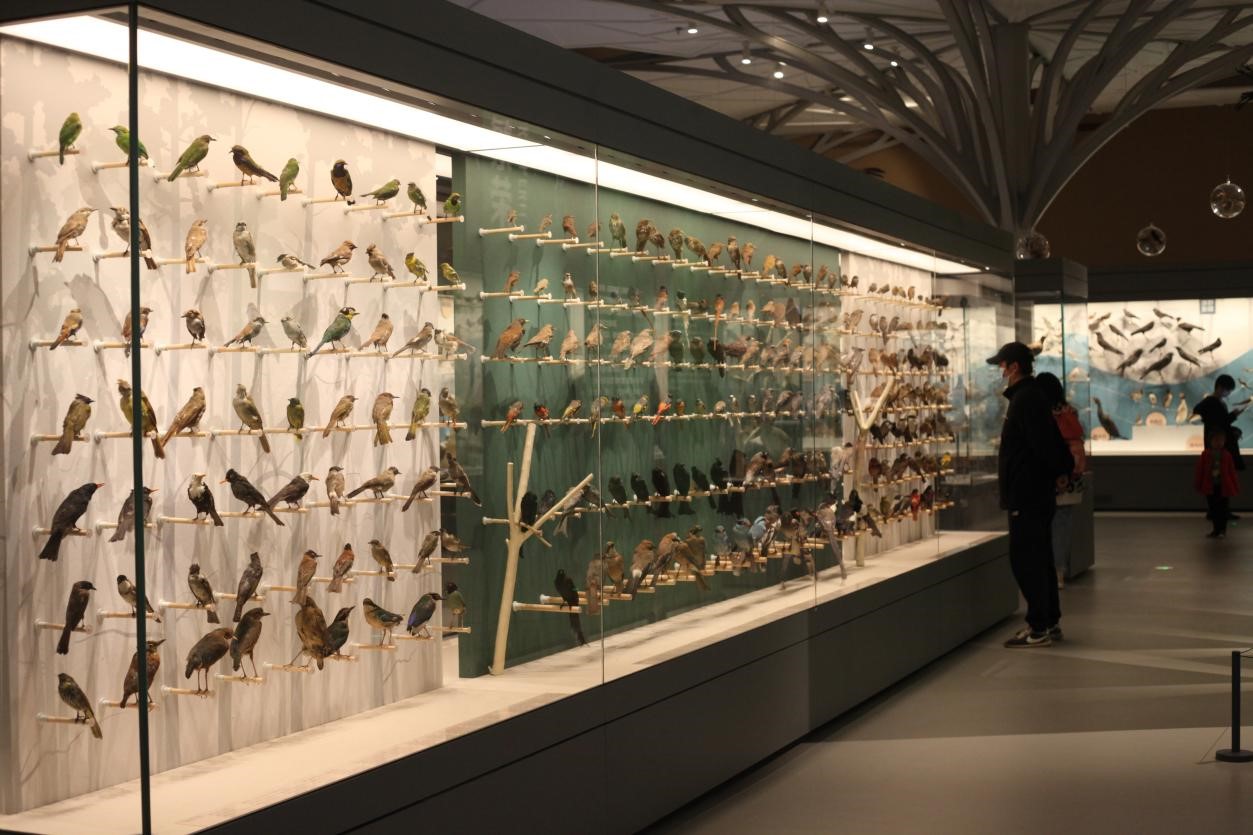
A whole showcase of bird specimens
Other animal species are classified according to their living environments, from luxuriant grassland to vast undulating sea. Over the course of about 25 million years of evolution, mammals have evolved unique body structures, high levels of perception and movement, as well as relatively complex social group relations. With a vast territory, China is one of the countries with the richest animal species diversity in the world. The collections of the Wanlin Art Museum consist of 177 species and subspecies of mammals in 12 orders, 38 families, including many endangered wild animals, which present a general picture of mammalian groups in China’s ecosystem. Those specimens have been collected over a span of nearly 100 years, but reveal a much longer evolution process, which echoes the theme of Evolution and Prosperity.
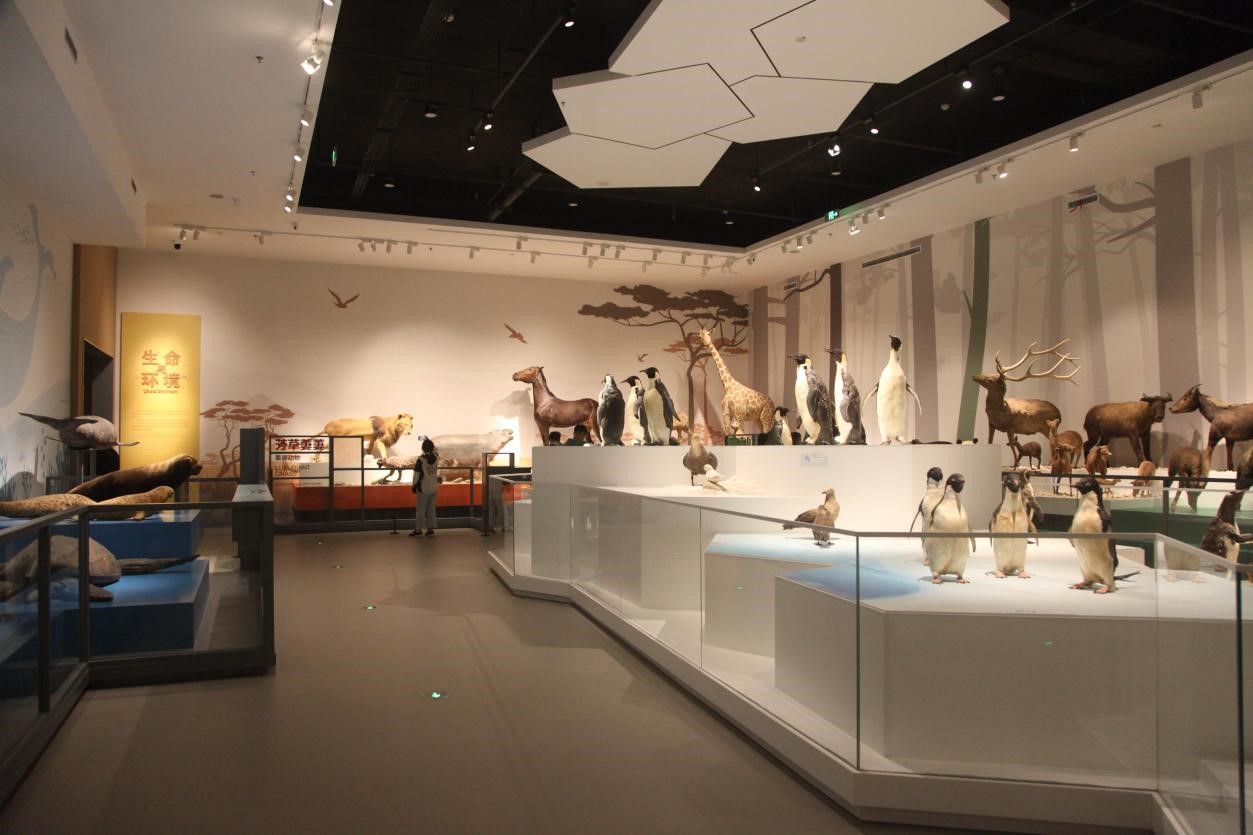
The exhibition hall of mammal specimens
In addition to these precious specimens, the other exhibition hall on this floor opens a window onto cultural relics. This invaluable collection was rescued and excavated by professional teachers and students majoring in archaeology at WHU, as well as the specimens brought back from the polar region by the scientific research team of the Antarctic Surveying and Mapping Research Center. What’s more, teachers, students, alumni of WHU and celebrities have donated many rare relics. The cultural relics recorded in history connect the cultural heritage and vicissitudes, and outline the historical changes and cultural context of the Chinese nation from ancient times to the contemporary age.
According to curator Ni Wan, 97 percent of the birds in this exhibition are native species and many of them are endemic in China, which comprehensively and systematically demonstrates the diversity and geographical distributions of Chinese birds. They provide important material objects for studying Chinese bird resources, which is meaningful to biologists at home and abroad. Besides academic significance, curator Ni said, “As a museum in the university, our main goal is to offer an extension to teaching and scientific research activities. Not only students majoring in biology, history and archaeology can take this museum as a second classroom, but other students interested in those subjects can also take public electives like Appreciation of Chinese Cultural Relics here. Actually, every museum is a university.”
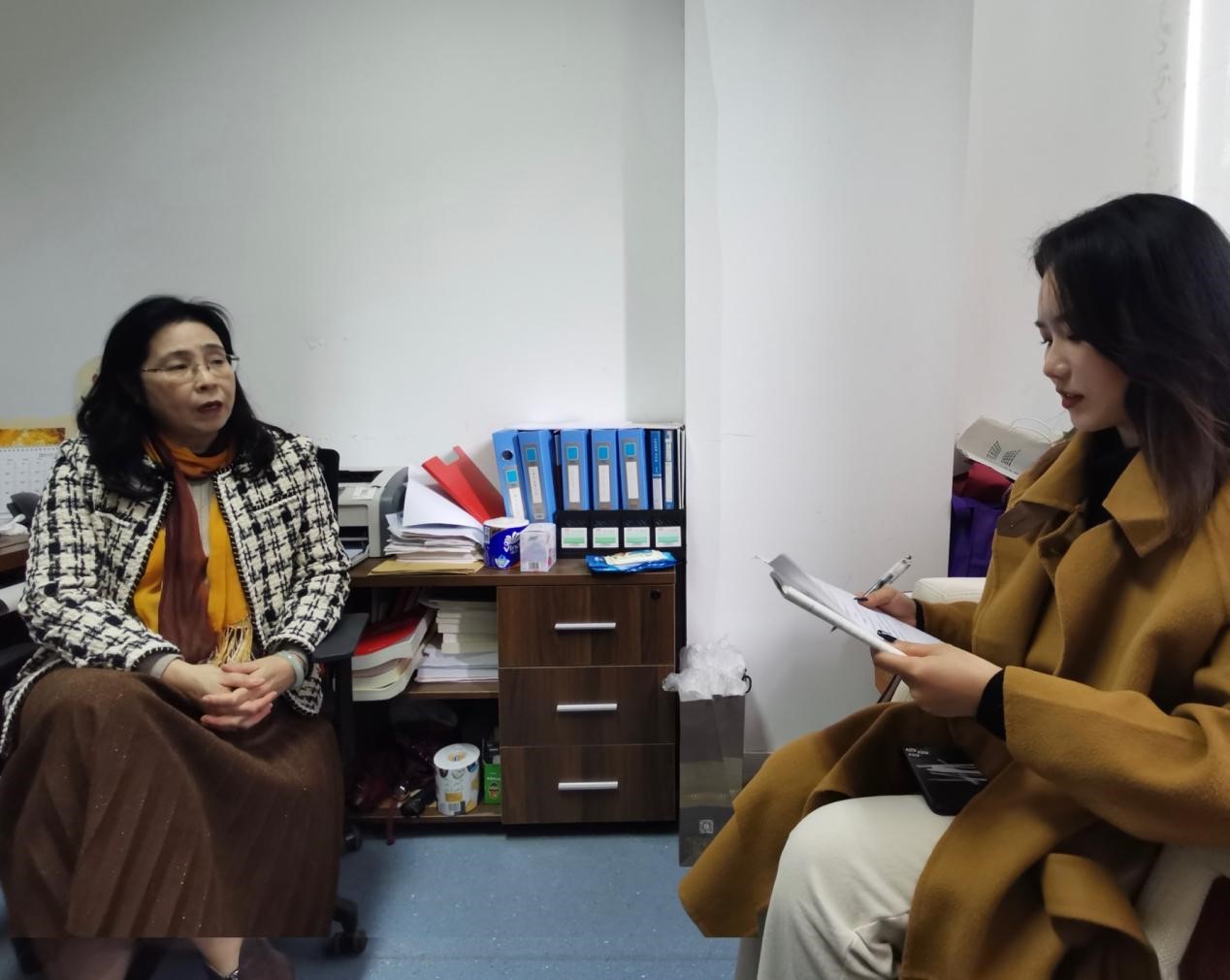
Curator Ni being interviewed
Besides the grand opening of essential exhibits, a temporary exhibition of fine paintings and calligraphy collected by the museum, Returning to the original and exploring the new, is displayed on the second floor. Although from different ages and in different styles, those artists present artworks with both epochal and national character that bring the audience back to the original while opening up to the new.
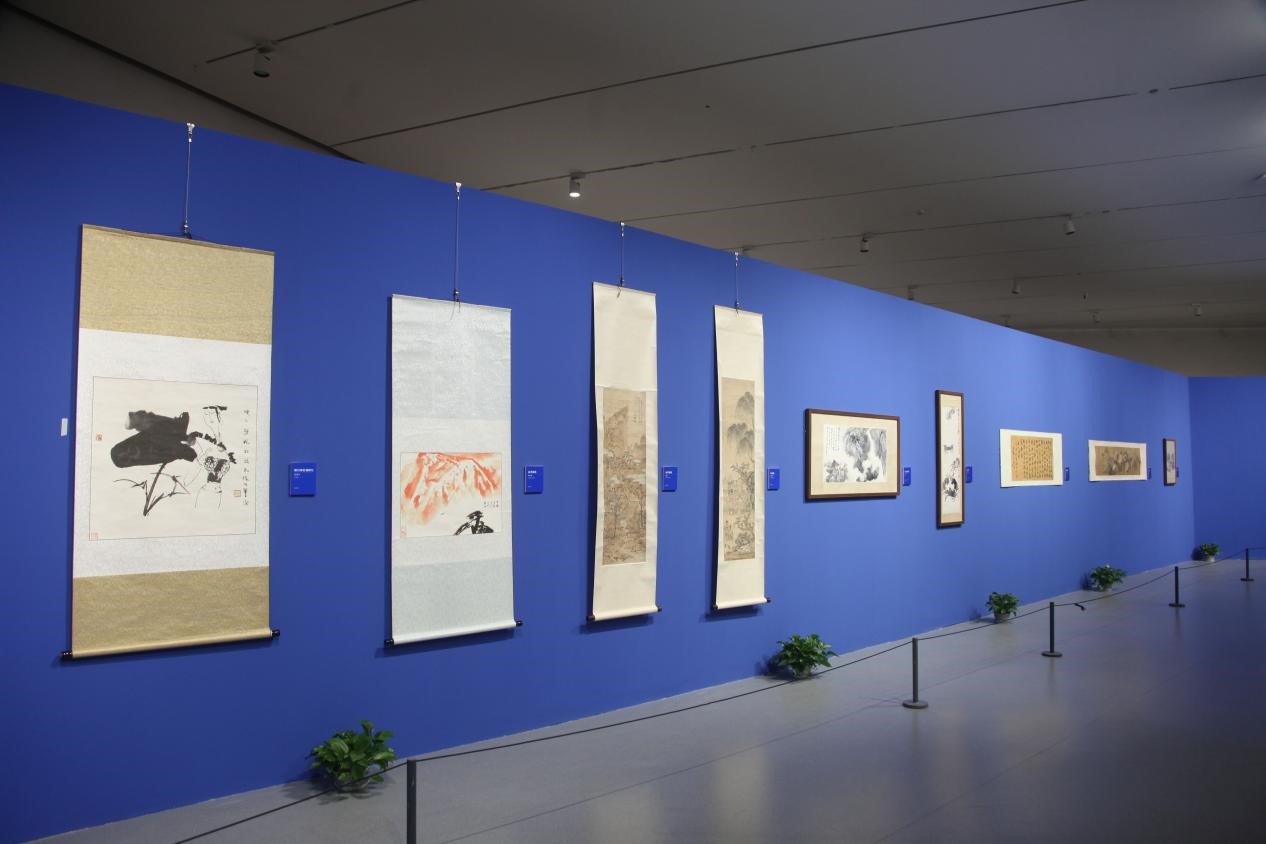
Paintings and calligraphy work on the second floor
An interesting calligraphy work is Luo Luo Ru Shi by Prof. Feng Tianyu, the principal of the professional history advisory group of this exhibition. This saying describes a person’s firmness and prudence, and is used as the name of the essential exhibits of the Wanlin Art Museum this time. Curator Ni explained that the museum was designed as a stone located on Luojia Mountain, so this name not only expresses good hopes for students but is also highly compatible with the Wanlin Art Museum’s philosophy.
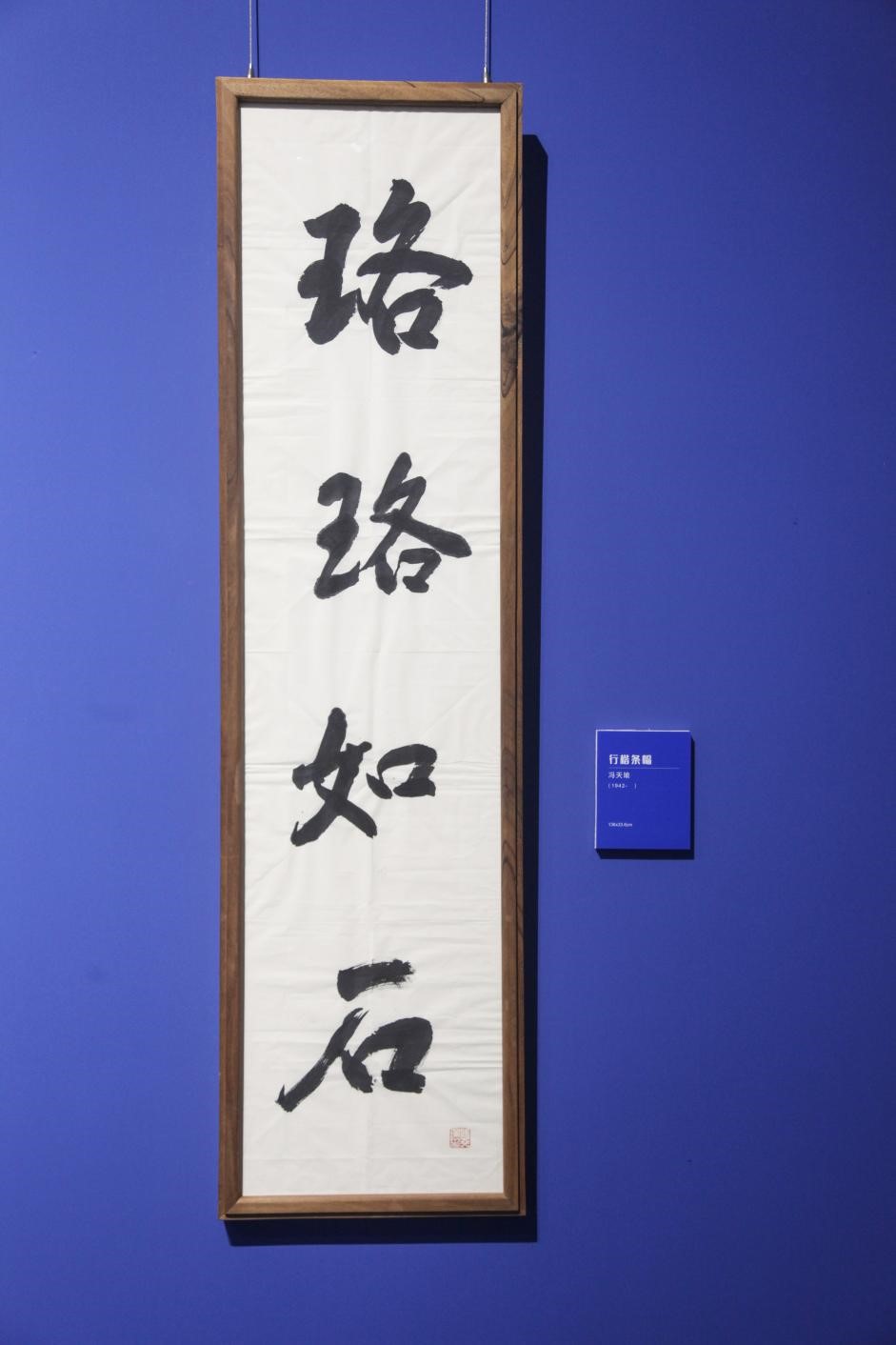
The calligraphy work Luo Luo Ru Shi
“A journey of a thousand miles begins with a single step.” In 1983, on the eve of his graduation from WHU, Cheng Dongsheng carved the word “beginning” on a rock atop Luojia Mountain. Since 1993, Chen Dongsheng has founded three major enterprises, China Guardian Auctions, Taikang Insurance Group and ZJS Express. In 2012, he donated 100 million yuan to build the Wanlin Art Museum, which is designed by the architect Zhu Pei. The construction commenced in October 2012 and was completed in December 2014. In 2015, before the opening of the Wanlin Art Museum, Chen Dongsheng donated a contemporary art collection worth 30 million yuan to the museum. Since then, curator Ni Wan, with professors from the College of Life Sciences and the School of History, started to plan the exhibition.
Another feature in this museum is the student volunteers. Xia Jialiang from the College of Life Sciences shared his working experiences, “We have been trained to be familiar with exhibition contents for a long time. The training process requires us to consult relevant information to enrich our explanations, which allows me to gain professional knowledge.” Guo Anni, another volunteer from the College of Life Sciences, believes that the volunteers have gained a sense of accomplishment of public service and improvement of interpersonal communication skills in the process.
Specimens are frozen images of life, showing the mightiness and breadth of nature. Cultural relics are the records of history, the witness of cultural deposits and vicissitudes. Specimens and relics, nature and humanity, this life or that story, greatness or humbleness - behind them all is the silhouette and personality of WHU.
Photo by Zou Pengzhi
Edited by Chen Jiaqi, Qin Zehao, Yu Jianan, Sylvia and Hu Sijia